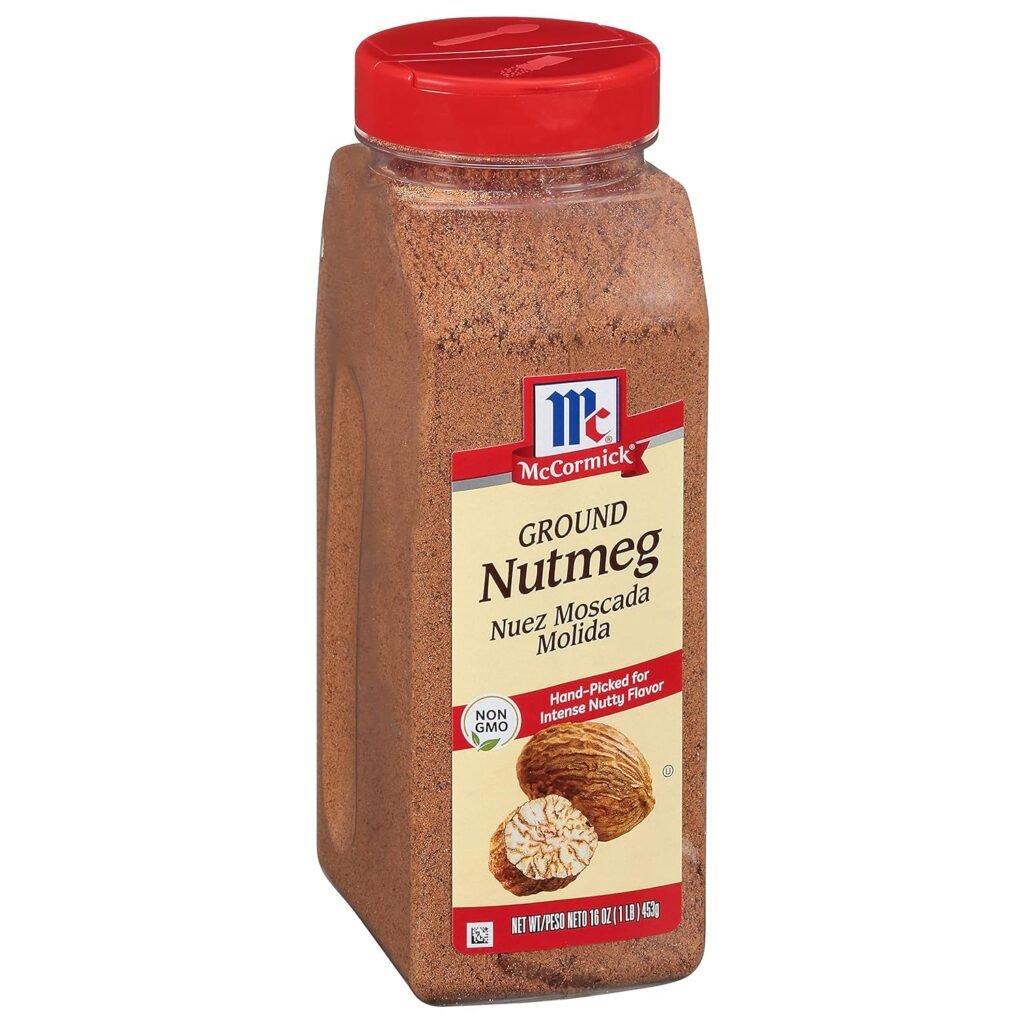Introduction to Ube
Ube, commonly referred to as purple yam, is a vibrant root vegetable that originates from the Philippines. This stunning tuber has captured the culinary world’s attention due to its striking, deep purple hue and its versatile nature. Traditionally used in Filipino desserts like halo-halo and ube halaya, this ingredient’s popularity has surged in recent years, transcending its geographical roots and finding a place in various international dishes.
The cultivation of ube dates back centuries, with its nutritional benefits and distinct flavor being cherished in Philippine culture. Unlike the more commonly known sweet potato, ube boasts a slightly nuttier taste with a hint of vanilla, making it a favorite for both sweet and savory applications. As chefs and home cooks alike explore the depths of global cuisine, ube’s unique flavor profile is being incorporated into everything from ice creams and pastries to more unconventional dishes like pizza and smoothies.
As ube continues to gain traction beyond its native territory, its culinary applications are diversifying. Chefs and food influencers are embracing this ingredient, showcasing how it can enhance both flavor and presentation. The journey of ube from humble roots in the Philippines to becoming a gastronomic favorite exemplifies the ever-evolving landscape of global cuisine.
History and Origins of Ube
Ube, scientifically known as Dioscorea alata, is a vibrant purple yam that has a rich history and cultural significance in Filipino society. This root vegetable is believed to have originated in Southeast Asia, particularly in the Philippines, where it has been cultivated for centuries. Historically, ube was not just a staple food but also an integral part of various cultural rituals and festivities, symbolizing prosperity and resourcefulness.
In traditional Filipino cuisine, ube is utilized in a variety of dishes, ranging from desserts to savory meals. It is often transformed into ube halaya, a sweet purple jam that forms the basis for many celebratory treats. The yam is also a common ingredient in popular desserts such as ube ice cream, cakes, and pastries, often enjoyed during festive occasions such as birthdays and holidays. Ube’s naturally sweet flavor and striking purple hue have made it a cherished component in local gastronomy, often evoking nostalgia among those who grew up enjoying these foods.
In recent decades, the global culinary landscape has seen a burgeoning interest in ube, with international chefs and food enthusiasts embracing its unique qualities. From being a local delicacy in the Philippines to captivating the palates of food lovers around the world, ube has carved its niche in various global culinary trends. This transformation can be attributed to a growing appreciation for ingredients that offer both aesthetic appeal and nutritional value. The yam, now available in diverse forms such as flour and powder, has sparked innovation in food preparation, allowing for a range of applications from baking to confectionery.
As ube continues its journey from a traditional Filipino ingredient to a globally recognized superfood, it showcases the intersection of culture, identity, and culinary creativity that shapes our understanding of food today.
What Does Ube Taste Like?
Ube, often referred to as purple yam, offers a unique flavor profile that captivates the senses. Its taste can be described as subtly sweet, with a creamy texture that makes it widely appealing. When incorporating ube into various dishes, one can note a gentle tickle of nuttiness that adds depth to its flavor. This distinctive sweetness is reminiscent of that found in other root vegetables, yet ube possesses an unmatched complexity that truly sets it apart.
The vibrant purple yam’s flavor can be likened to a combination of vanilla and a hint of coconut, creating a delightful experience on the palate. It also carries undertones of earthy notes which complement its sweetness remarkably well. When ube is used in desserts, the resulting dishes often showcase its flavor in a way that is both comforting and exciting. For instance, ube ice cream offers a rich, creamy texture that enhances the sweet yet mild essence of the yam.
In the context of savory dishes, ube lends itself well to unexpected pairings. Its flavor can balance the richness of meats and the acidity of citrus, making it a versatile ingredient in various culinary applications. Whether boiled, mashed, or used in pastries, ube maintains its signature taste while adapting to different combinations and preparations.
In addition to its taste, the visual appeal of ube can greatly enhance the overall sensory experience. The striking purple hue not only entices the eyes but also invites curiosity about its flavor. Many who first encounter this unique ingredient often report an explosion of flavor that can only be described as delightful and wholesome. Ube undoubtedly reveals a remarkable taste journey that is transforming the culinary landscape, offering something both extraordinary and familiar for diners to enjoy.
Ube vs. Taro: Understanding the Difference
Ube and taro are two root vegetables often confused due to their similar appearances, yet they possess distinct characteristics that set them apart. Ube, scientifically known as Dioscorea alata, is a vibrant purple yam primarily found in Asian cuisine. Its striking color is immediately eye-catching and can transform dishes into visually stunning creations. Taro, or Colocasia esculenta, is recognized for its light purple to beige skin with a starchy, off-white interior that exhibits a more muted hue compared to ube.
The flavor profiles of ube and taro diverge considerably. Ube exhibits a mildly sweet flavor reminiscent of vanilla or coconut, making it ideal for desserts and sweet dishes. Its natural sweetness enhances baked goods, ice creams, and even beverages. Conversely, taro has a more earthy flavor, accompanied by nutty undertones. This characteristic makes taro a popular choice for savory applications such as soups, stews, and various Asian dishes where it complements other ingredients without overwhelming their flavors.
Nutritionally, both ube and taro deliver impressive health benefits. Ube is rich in antioxidants, particularly anthocyanins, which contribute to its vibrant color and promote overall health. It also contains essential vitamins and minerals including Vitamin C, potassium, and fibers that support digestion. Taro is abundant in dietary fiber, providing digestive health benefits as well, along with Vitamin E, magnesium, and phosphorus. While both root vegetables are nutritious, the specific vitamins and minerals vary slightly, catering to different dietary needs.
In terms of culinary uses, ube is cherished in desserts like ube halaya and ube cheesecake, while taro can be found in savory dishes like taro dumplings and bubble tea. Understanding these differences enhances appreciation for both root vegetables, guiding culinary enthusiasts in selecting the right ingredient for their recipes.
Culinary Uses of Ube
Ube, known scientifically as Dioscorea alata, is a tuber that has captured the attention of chefs and food enthusiasts alike, largely due to its striking purple hue and subtle sweetness. This versatile root vegetable is not only a staple in Filipino cuisine but has also been embraced globally across various culinary contexts. Its creamy texture and vibrant color make it an ideal ingredient for both traditional dishes and innovative creations.
In traditional Filipino cooking, ube is commonly used in desserts. One of the most celebrated examples is ube halaya, a sweetened purple yam jam that serves as both a standalone treat and a topping for other delicacies. Ube is also a key ingredient in classic sweets such as leche flan, where it is often layered for visual appeal and flavor enhancement. Furthermore, ube is incorporated into popular Filipino pastries like ube pandhi or ube cupcakes, offering a delightful twist on familiar favorites.
The contemporary culinary landscape has seen ube take on new forms, particularly in cafes and restaurants. It is now featured in a variety of desserts, including ube ice cream, where its natural sweetness is accentuated by creaminess, providing a refreshing treat. In addition to desserts, ube lattes have gained immense popularity, combining the earthy flavor of the yam with espresso and steamed milk, creating a visually striking and flavorful beverage. Ube has also made its way into cakes and pastries, marrying well with flavors such as chocolate or coconut, appealing to a broader audience.
This adaptability has solidified ube’s place within the culinary world, inviting chefs to experiment and showcase the yam in innovative ways. With its increasing popularity, it’s clear that ube is not just a passing trend; it is an ingredient poised to remain in vogue, inspiring creativity in both traditional and modern kitchens worldwide.
Where to Find Ube
Finding ube, the vibrant purple yam, can be a delightful quest for culinary enthusiasts. This unique ingredient is increasingly available in various forms, such as fresh ube, ube powder, and extracts, reflecting its growing popularity in kitchens around the world. The first place to start is at local grocery stores, particularly those that cater to diverse communities. Many Asian markets often stock fresh ube, making them ideal for sourcing the whole tubers.
When searching for ube in its fresh form, inquire at the produce section of these markets. Not all general grocery stores may carry ube regularly, but those in areas with significant Filipino or Asian populations typically provide it. If you do not find it at your local store, try checking specialty stores or even farmer’s markets, which may sometimes feature unique produce items seasonally.
For those who prefer ube in a more processed format, ube powder and extracts are available at health food stores or online retailers. Websites specializing in Asian ingredients often have a wider selection compared to local supermarkets. Shopping online allows you to explore various brands and forms of ube, ensuring access to quality products. It is advisable to check product reviews and ratings to gauge their authenticity and flavor profile.
While purchasing, look for vibrant purple coloring, as this indicates freshness and quality. When buying ube powder, verify that it is pure and free from additives for the best culinary results. In summary, whether exploring your local Asian market or browsing online, opportunities to discover and incorporate ube into your dishes are abundant, satisfying any culinary curiosity around this vivid and flavorful ingredient.
Ube Festivals and Cultural Significance
Ube, the vibrant purple yam, holds a special place in Filipino culture, representing more than just a culinary delight. This tuber has deep roots in the celebrations and traditions of the Philippines, showcasing the rich heritage and artistry of Filipino life. From festive gatherings to annual food fairs, ube has become a symbol of community, unity, and shared history.
One of the most notable events celebrating ube is the Long Beach Ube Festival in California, which has gained popularity among Filipinos and food enthusiasts alike. This festival not only honors ube but also highlights its versatility in various recipes, such as traditional ube halaya, cakes, ice creams, and even modern fusion dishes. The festival brings together vendors, artists, and performers, creating an atmosphere of joy and cultural exchange, which reinforces the sense of community among attendees. Participating in the Long Beach Ube Festival provides a unique opportunity to experience the cultural significance of ube while enjoying a variety of culinary offerings.
Beyond food festivals, ube is often featured in family gatherings, holidays, and special occasions in the Philippines. It symbolizes prosperity, abundance, and creativity, making it an essential ingredient in celebrations like birthdays, Christmas, and New Year’s festivities. In many Filipino families, the preparation of ube desserts is a cherished tradition, passed down through generations. This process of cooking and sharing ube dishes fosters connections among family members, bridging the gap between the past and present.
In essence, ube is more than just a flavorful ingredient; it embodies the spirit and resilience of Filipino culture. Through events like the Long Beach Ube Festival and the traditions surrounding its use in everyday life, ube continues to unite communities and celebrate the rich tapestry of Filipino culture, ensuring that its vibrant legacy endures for future generations.
Tips for Cooking and Baking with Ube
Incorporating ube into your home cooking and baking can elevate your dishes with its unique flavor and vibrant color. To begin, it is essential to choose the right ube, which can often be found in Asian grocery stores. Look for firm, unblemished roots with a rich purple hue. Fresh ube can be stored in a cool, dry place for several weeks, while cooked ube can be refrigerated for up to a week or frozen for longer storage.
Preparation is a critical step when working with ube. First, thoroughly wash the yam to remove any dirt. You can peel it using a vegetable peeler; however, for a smoother blend, it is recommended to boil the ube first. Cooking methods include boiling, roasting, or steaming. Boiling takes approximately 30 minutes, while roasting may require about an hour. Once cooked, the ube should be tender and easy to mash, which is perfect for creating purees or integrating into batters.
When baking with ube, consider its unique flavor profile that pairs well with coconut, milk, or chocolate. Ube’s natural sweetness can enhance desserts like cakes, brownies, and cookies. For a delectable ube cake, mix the mashed ube with your standard cake batter, replacing a portion of flour to maintain moisture. Additionally, combining ube with citrus flavors, such as lemon or lime, can add a refreshing contrast, showcasing its versatility.
It is also worth exploring ube in savory dishes. Incorporating it into soups, stews, or even as a side dish can add a delightful touch. Don’t hesitate to utilize ube in fusion cuisine as well. Blending ube with traditional recipes can surprise and delight guests, making any meal memorable. With these practical tips, you can confidently add ube to your culinary repertoire, creating visually stunning and delicious dishes that celebrate this vibrant purple yam.
The Future of Ube in Global Cuisine
As the culinary world evolves, ube emerges as a key player, showcasing its versatility and vibrant appeal in a myriad of dishes beyond traditional Filipino cuisine. This striking purple yam has captivated chefs and home cooks alike, gaining popularity not only for its unique flavor but also for its bold color, which creates visually stunning presentations. Ube’s adaptability lends itself to a wide range of culinary applications, from desserts to savory dishes, making it an ingredient that transcends cultural boundaries.
The increasing trend of incorporating ube into various cuisines highlights a broader acceptance and appreciation of global flavors. As more people discover the delightful taste and health benefits of ube, it stands poised to become a staple ingredient in many kitchens around the world. Innovative culinary minds are finding ways to incorporate ube in unexpected contexts, such as lattes, pancakes, and even savory sauces, thus expanding its usage far beyond its traditional roots.
Moreover, with the rise of social media and food blogs, the allure of ube continues to spread, inspiring food enthusiasts to experiment and share their experiences. Home cooks can explore the enchanting qualities of ube, either through recipes they create themselves or by trying out dishes featuring this exquisite ingredient at restaurants. This shared passion for culinary exploration not only fosters a community but also encourages the fusion of flavors and traditions that continue to shape the future of global cuisine.
In conclusion, the burgeoning popularity of ube signifies its potential as a prominent ingredient in kitchens worldwide. Whether you’re a seasoned chef or a curious cook, exploring ube in your own culinary adventures can lead to delightful discoveries that enrich your cooking experience. Embrace the charm of this vibrant yam, experiment with its versatility, and savor the enchanting flavors it brings to your table.
























